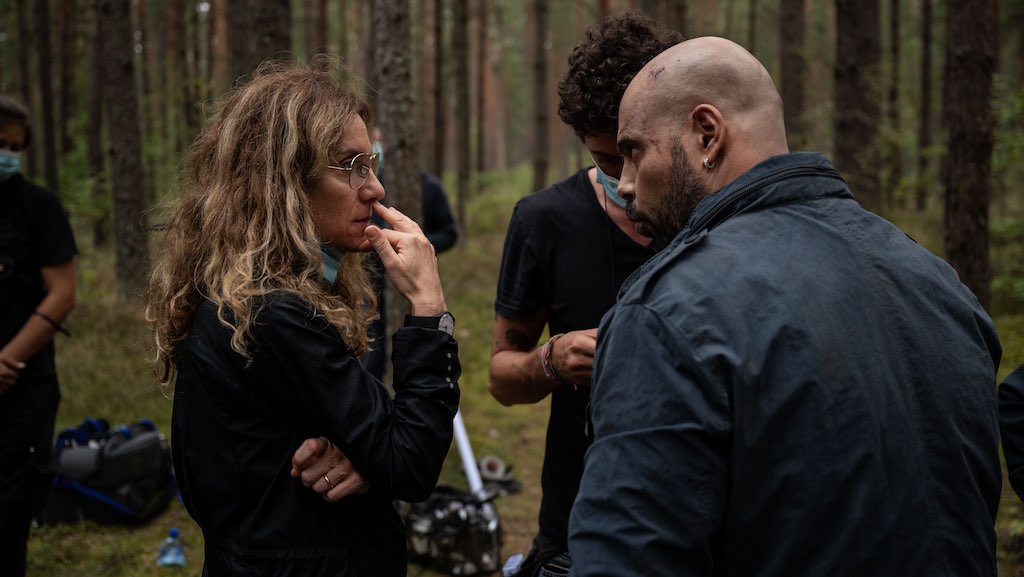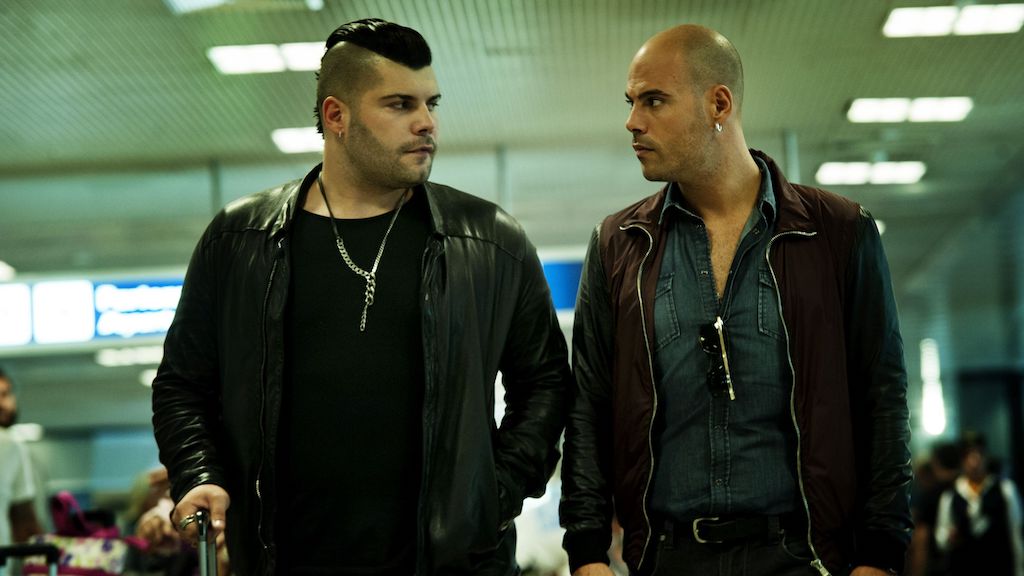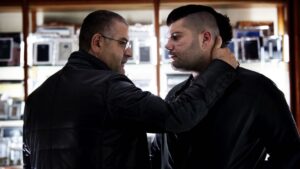news
TBI Weekly: How ‘Gomorrah’ put Italian drama on the map

Few shows have done as much to put Italian TV drama on the map as Gomorrah. As the iconic crime series celebrates its 10th anniversary on Monday, Nick Edwards talks to those behind the series to find out how it got onto screen, its legacy and what’s coming next.
A decade ago, following America’s much celebrated Golden Age of TV drama that included shows such as The Sopranos, Mad Men and The Wire, audiences around the world were wondering if the wave of subtitled series they were now enjoying from Scandinavia (The Killing, The Bridge) and France (Spiral) was a passing trend or here to stay.
When the gritty Neapolitan-set crime drama Gomorrah hit screens, its ground breaking cinematic approach ensured that the global appetite for international TV drama had only just begun.
In the early 2000’s, Italy’s public service broadcaster Rai and its commercial rival Mediaset were the only players in town. Rather than try to emulate American series, as well as to differentiate itself, Sky Italia looked for inspiration in Italy’s TV and film history.
The first outing was 2008’s mini-series Quo Vadis, Baby?, based on a film of the same name. “It was a pretty straight forward investigation drama,” says Nils Hartmann, EVP of Sky Studios Italy, “but with a rock and roll female protagonist who likes to smoke spliffs.”
This was followed by Romanzo Criminale (2008-2010), a remake of a film about vicious mobsters who ran Rome’s underworld during the 1970’s. It was a challenge to find a director willing to follow in the footsteps of Michele Placido who directed the celebrated and multi-award winning film but a then unknown Stefano Sollima was chosen.
At that point, Sollima had made a short film and some episodes of a Rai crime drama (La Squadra) that the team at Rome-based production company Cattleya had been impressed by.
Riccardo Tozzi, the founder and president of Cattleya (now owned by ITV studios), was intrigued by the fact that Stefano was the son of Sergio Sollima, a famous film director, and due to losing his mother at a young age, had grown up on set. “I thought he must be so familiar with cinema,” says Tozzi, “and once given an opportunity he exploded.”
Romanzo Criminale was hugely popular with Italian viewers and signalled Sky’s strategy was working. One fan was Roberto Saviano, the author of Gomorrah, the non-fiction account of how life in the region of Southern Italy where he’d grown up had become saturated by mafia activity.
“Saviano loved Romanzo Criminale,” says Tozzi. “He came to see me and said ‘I want to make a series, this new kind of series’. He told me a few lines about the idea: The Princes of Gomorrah. It was about two brothers, the father and the mother. I thought this is a Greek tragedy or a Shakespearian play.”
The Princes of Gomorrah would become Gomorra: La Serie, an entirely different beast to the book (or indeed the celebrated 2008 movie of the same name, which was also loosely based on the book). The writers used only a section of Saviano’s book – the chapters that documented the brutal wars that took place between rival Neapolitan gangs – to form the narrative spine of season one.
The five-season saga (and the film, L’Immortale) of slayings, feuds and manoeuvring for ultimate power played out like a contemporary retelling of Francis Ford Coppola’s The Godfather trilogy, but Gomorrah (as Gomorra: La Serie would be known to English-speaking audiences) also aimed to shed light on a world many Italians did not know existed.
“On one hand I wanted it really big and cool, like Miami Vice,” says Sollima. “On the other it was really important for me to portray the lives of these characters realistically, like a documentary.”
He was inspired by how Saviano had approached the book. “I wanted to go there to understand it,” he says. Like Romanzo Criminale it was shot entirely on location something that previously had not been done on Italian TV.
And like the American shows that had inspired Sollima, such as The Sopranos and The Wire, authenticity was critical. The actors spoke in the true dialect of the Secondigliano and Scampia parts of the city where the wars took place – a version of Neapolitan (that is itself recognised as a different language to Italian) that even many Neapolitans do not understand.
This was one of the many risks the show took. “After watching the first rushes, I remember phoning Stefano asking if he had a room where me and my sons could live after Sky fired me,” says Hartmann. “But it was that kind of brave decision that made the difference.”
The writers went to Naples and read all the investigations the police had done; thousands of criminal reports, trial records, witness statements, wire tap transcripts, and so on. However, what was more challenging was gaining the trust of those with inside knowledge.
“We asked people if they knew anyone who was involved in the wars. For example, if they had been in jail and now were out,” says Leonardo Fasoli, the main writer of the show’s five seasons. “It was scary at the beginning because they didn’t understand our motives. Once, I got into a car with three guys and they asked me; ‘what do you really want? Guns, drugs?’ and I said, ‘no, no, just stories.’”
Saviano, who worked on the show, was described by the production team as an ‘encyclopaedia’ or ‘database’ of technical information. It was felt that some of his anecdotes, if put on screen, would not have been believed, whilst others, such as an incident in which a clan member arrives at a meeting accompanied by a leopard on a leash, made it in.
Sollima’s trademark style of very few close ups, shooting wide and long, showcased Naples’ stunning coastal geography, and it contrasted with the dilapidated grandeur of its ancient architecture and run down housing blocks. As with Baltimore in The Wire, Naples was the most important character.
“If it takes 47 takes, he’ll do 47 takes, even on an establishing shot,” says executive producer, Gina Gardini. “Every shot has to be perfect from beginning to end.”
However, there were other reasons for Sollima’s approach. “Every shot needs to be telling a bit of narration,” she continues. “Sollima believes that without context your not telling a story, especially with Gomorrah. If you take a character out of that context your no longer telling the story of Gomorrah.”
Italian TV, like most ‘free’ European TV then, was characterised by a black and white morality – good guys versus bad guys. “We went beyond that into nuances, showing these people as human beings” say Hartmann. “Being a criminal is not a choice in that world, it’s something you grow up in, if you are lucky you might get out. That different moral POV was what was really daring and different.”
In many ways theses characters who had often killed multiple people were the ultimate anti-heroes. Meeting them left a lasting impression on the writers.
“Perhaps it is your daughter’s or son’s birthday, your family is gathered around the cake, singing happy birthday, and you get a call telling you that you have to go and kill someone. Someone told me ‘every time I see myself in the mirror I see all the people I’ve killed starring back at me,” says Maddalena Ravagli, one of the show’s main writers.
The showrunners of the series that were said to have constituted America’s ‘Golden Age of TV’ drama (as well as those that followed from Scandinavia and France) were all writers, and because of this, the long-form model of serialised drama had become known as a ‘writers medium’.
But Gomorrah’s showrunner was a director not a writer, who approached TV like a film. Sollima’s forged this style in Romanzo Criminale but it came of age in Gomorrah.
“What made Romanzo work was that Stefano and I were winging it. We only knew how to approach it as a really, really long movie,” says Gardini. This approach also accounted for the potency of the plot lines and character arcs of each season.
“Sollima would say to us, ‘we are doing this season now, so you cannot save anything for the next season, because we don’t know if there will be a next season. So all the best material we must use now,” says Fasoli.
This could have created challenges for the writers because lead characters were often killed off. However the gruesome reality of life as a member of Camorra (the Neapolitan Mafia) meant this was simply realistic.
“Italy’s main public prosecutor explained that it’s really dangerous to think of the main enemy as a single individual,”says Ravagli, “because the problem is not that there is a villain but rather that social conditions are allowed to exist, created by national politics and culture, which relentlessly creates new ones.”
“In the decade since Gomorrah, the Italian TV drama industry has changed unrecognisably; multiple streamers have entered the market and until 2019 commissioning has increased exponentially,” says Paolo Ciccarelli, head of drama at MIA Market in Rome.
Sky has continued to push the boundaries between what is TV and cinema, most notably with Zero, Zero, Zero (Sollima’s follow-up to Gomorrah) and Paolo Sorrentino’s The Young Pope. Sollima himself has since become one of Hollywood’s most sought after directors.
However, around the time of Sky Italia’s 20th anniversary, the subscription channel’s future did not look so certain. Their success had been emulated by their rivals. Some of the world’s most groundbreaking drama could now be found on ‘free TV’, such as Rai’s My Brilliant Friend (a collaboration with HBO) whilst their audience was initially the natural target market for the global streaming platforms.
When the post-pandemic crash hit, sister studio Sky Deutschland was shut down and Sky Italia shows, that had already been announced, were cancelled. They had to pivot.
“We sliced our slate slightly down and are doing a few more shows that are more open to a broader audience,” says Hartmann. “We decided to open up to comedy, and to do a bit more ‘lean back’, with a Sky Italia touch.”
Though the future looked uncertain for Sky Italia, the same challenges proved even more existential for many of the new entrants to the market. Some stopped commissioning all together whilst others moved away from more challenging drama in attempt to get a slice of the bigger mainstream market.
“It is now clear the editorial line many of the global streamers are pursuing and it is far less geared towards Sky’s traditional space,” says Ciccarelli.
Sky’s drama has become embedded in Italy’s cultural offering and long term loyal subscribers still expect a particular type of content. “We have to keep on breaking the rules,” says Hartmann, “and make the occasional project that goes completely over the edge.”
Which takes us back to Gomorrah and a prequel that is in the works.
“Shooting is scheduled to start in the winter of 2025. We will be going back in time. Naples in the 70s is very different,” says Tozzi.
“There are smugglers, it’s the beginning of the first steps of the drug market, cigarettes are a big deal. It’s a different atmosphere, the style of shooting will be different, less dark. The characters are very young, more teenagers. There is a different energy, a kind of innocence. They end up with a loss of that innocence, that brings us close to the beginning of Gomorrah. Saviano is working on it too,” he adds.
“It took us a while to decide it was worthwhile to go back into something that is so sacred to Sky,” says Hartmann. “We’re taking a big risk, we want to make sure it has the same credibility, so we’re being really careful about the writing. Just imitating Gomorrah, what good would that do?”







